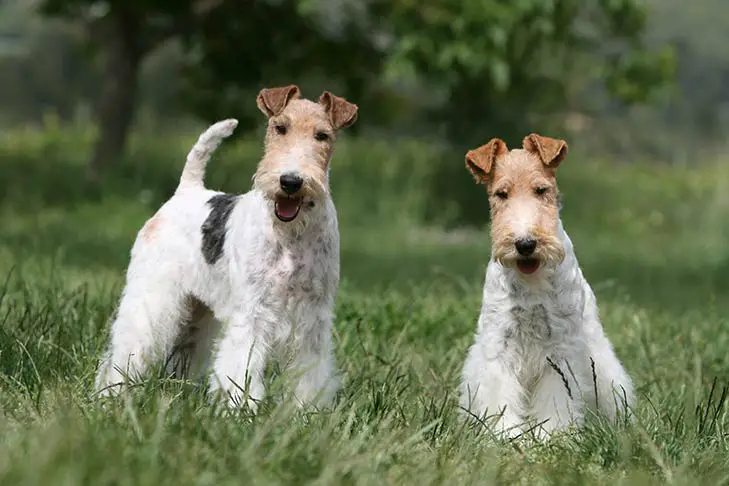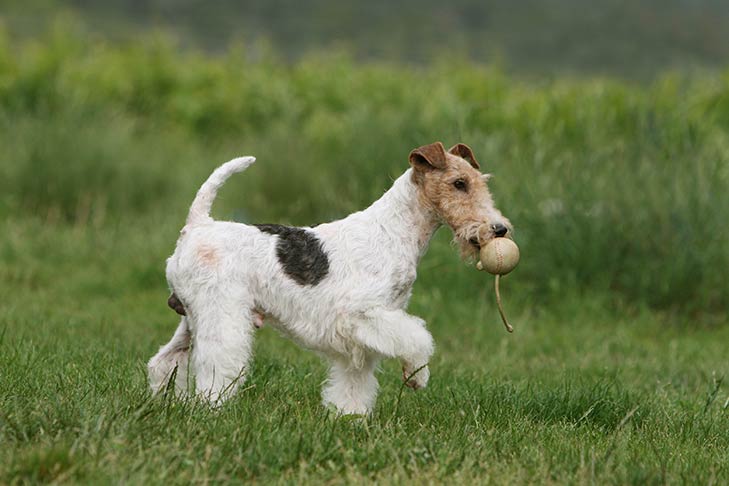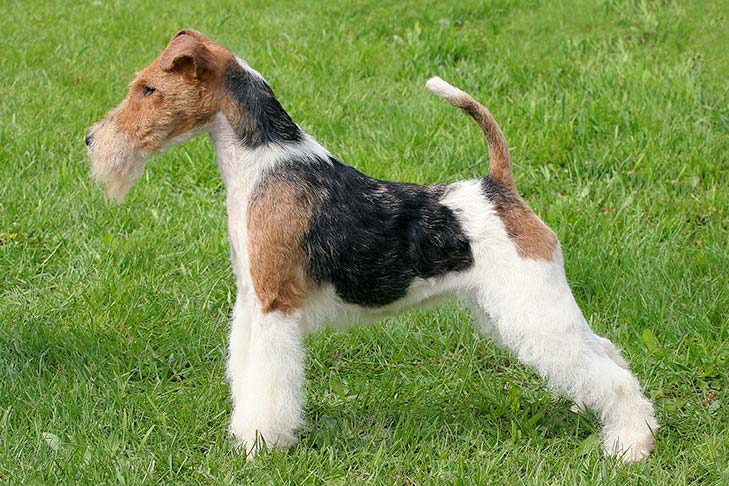The Wire Fox Terrier is a master show dog who was formerly a staple of traditional British foxhunts and is now a gorgeous and humorous companion. According to the breed standard, they should be “on the tip-toe of expectation at the slightest provocation.” The Wire Fox Terrier is a powerful, symmetrical, short-backed predator with fire and intellect gleaming in its dark, wide eyes. It weighs 16 to 18 pounds of coiled energy. The V-shaped ears are carefully folded forward to highlight the peculiar and absolutely seductive expression on the face. The mostly white coat is rough and wiry.
For families searching for a cheerful, sociable pet with lots of personality, wires are wonderful companions. They exhibit the typical independence and prey drive of this tough canine group as terriers. They are sociable and intelligent; although training them can be difficult, it is not impossible. Wires are excellent athletes, born comedians, and pleasant housemates. They also have a long lifespan and little hair loss.






 Health
Health Grooming
Grooming Exercise
Exercise Training
Training Nutrition
Nutrition